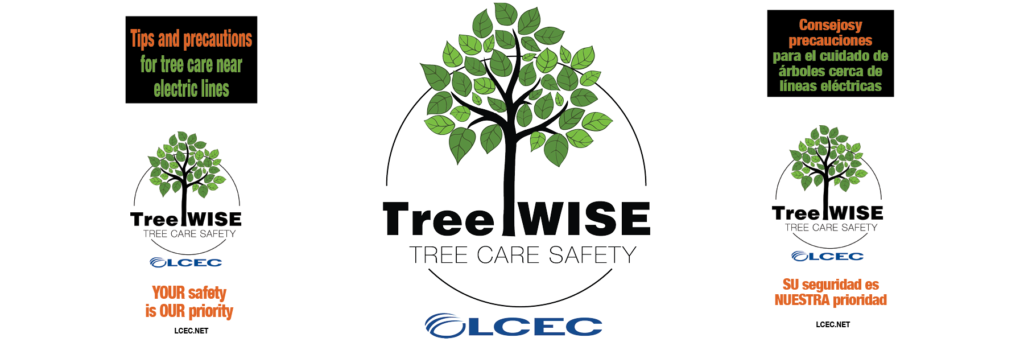TREEWISE
Be Tree Wise – Care for trees safely
Tree care near power lines is dangerous and may cause serious injury or death. Touching or contacting a power line with body parts,
tools, or trimmings may cause a powerful electric shock. During tree care, all tools, body, and tree parts must remain a minimum of 10
feet away from energized lines. Only qualified line clearance arborists may work within 10 feet of energized lines.

Please submit a Tree Trimming Request Form for a free site visit to assess and determine the best course of action for your tree and line conflicts.
Notification
LCEC attempts to notify customers in advance of tree work through personal, phone, or door hanger contact unless the work is part of emergency power restoration activities.
